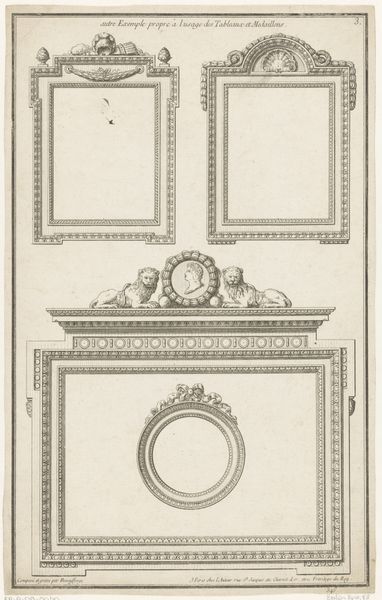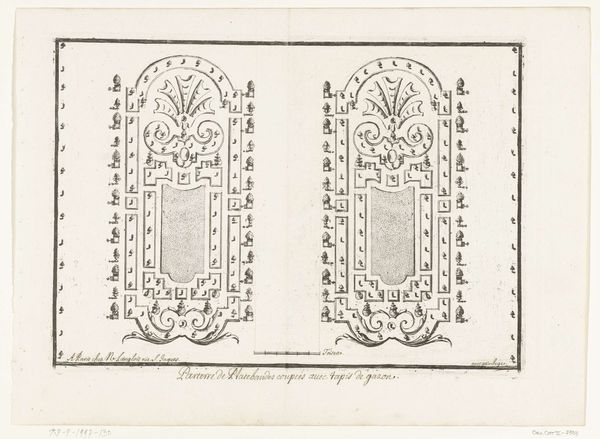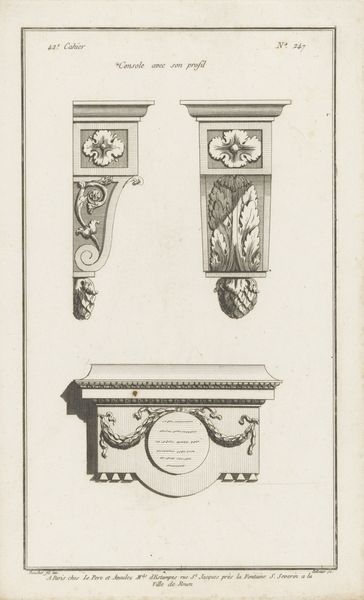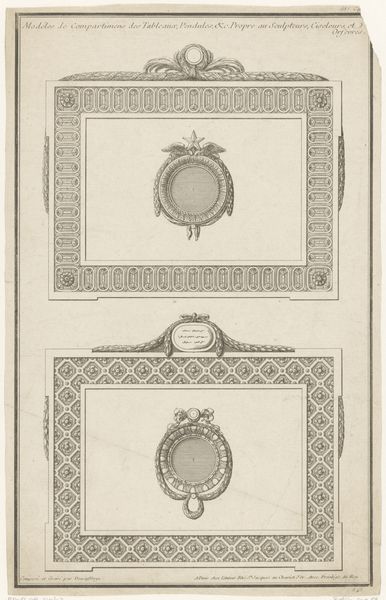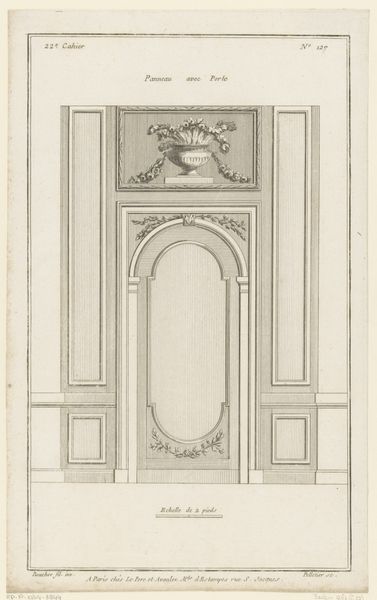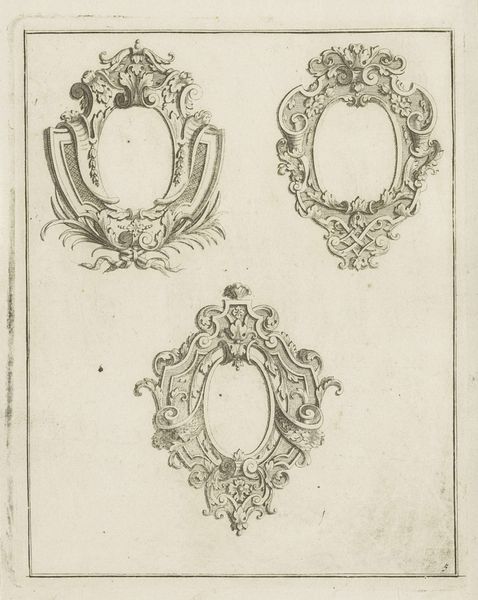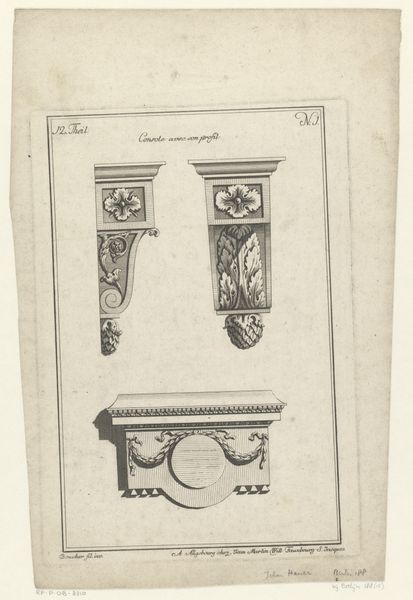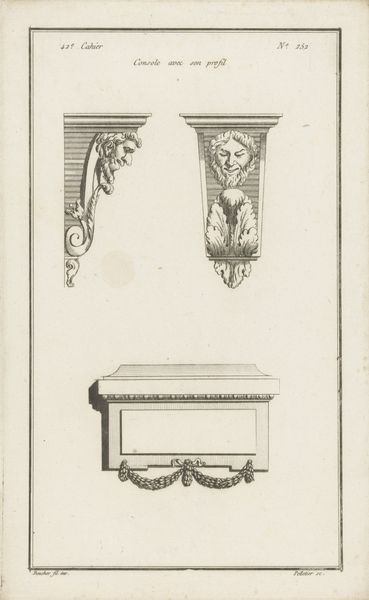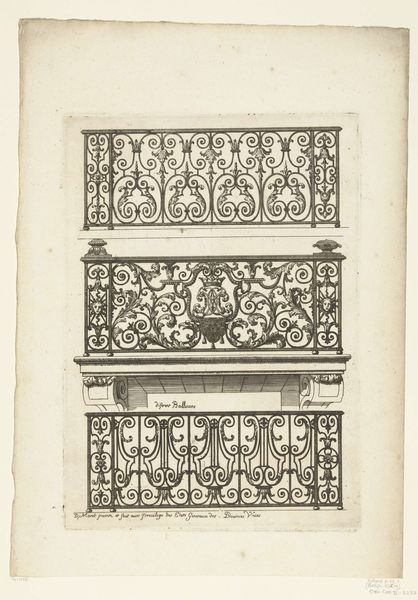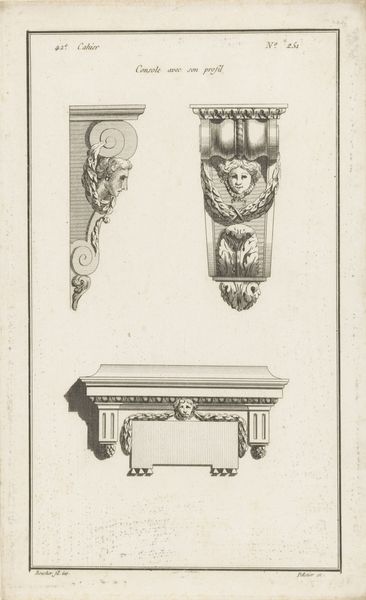
drawing, print, paper, engraving
#
drawing
#
neoclacissism
# print
#
paper
#
geometric
#
decorative-art
#
engraving
Dimensions: height 361 mm, width 230 mm
Copyright: Rijks Museum: Open Domain
Curator: Welcome. Let's discuss this engraving from 1763, titled "Ovale en rechthoekige omlijstingen," which translates to "Oval and Rectangular Frames." It was created by Jean François de Neufforge. Editor: Immediately, I'm struck by the almost obsessive level of detail. Look at the intricacy of those borders. It's all line, shape, and rhythm, creating an almost dizzying effect. The cool, gray tonality feels very classical. Curator: Indeed. As we can see in this work, Neufforge captured a key aspect of Neoclassicism's fascination with form. What draws you to those geometric shapes in relation to the overall aesthetic? Editor: It's fascinating how Neoclassicism reinvents ancient motifs. The ovals feel like simplified Roman arches, stripped down to their most basic form. Then, we've got those rectangles topped with little sculptures...a hint of self-important grandeur contained within precise lines. Curator: Those sculpted elements certainly evoke cultural memory. Do you see connections between their symbols, such as the lion, and what would have been considered emblems of status during this era? Editor: Absolutely. Lions were traditional symbols of strength and authority, often linked to royalty and aristocracy. Embedding them here isn't accidental; these frames were intended for specific patrons and, symbolically, to lend their artwork authority and social clout. It shows a real control of the image-making machine! Curator: I find that this careful integration of visual rhetoric mirrors broader societal norms, which relied on classicism to provide both stability and continuity. Editor: Which highlights an interesting tension at play in Neufforge's vision: The cold formality versus the delicate hand of the engraver... how do these detailed yet starkly architectural designs speak to the decorative arts within their culture? Curator: By synthesizing both geometric exactitude and ornamental finesse, these designs epitomize that era’s yearning for an enlightened classicism; something universal yet distinct. Editor: Seeing them together helps illuminate how the 18th-century eye might organize the world around itself; neat and hierarchical, as frames within frames. Curator: I concur! We hope this conversation offered fresh angles to interpreting form, utility, and cultural narratives in art and life! Editor: Definitely. Consider this blueprint when you view not just art, but also design. Until next time, happy viewing!
Comments
No comments
Be the first to comment and join the conversation on the ultimate creative platform.
